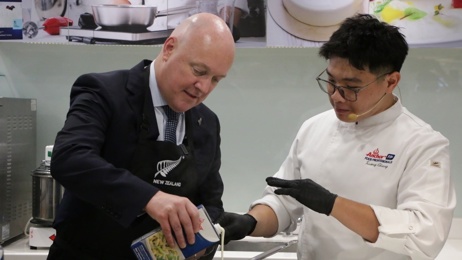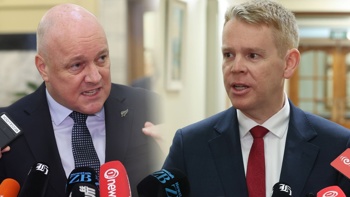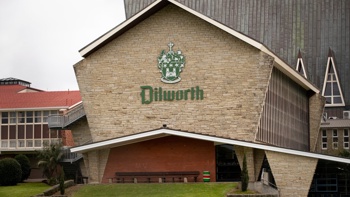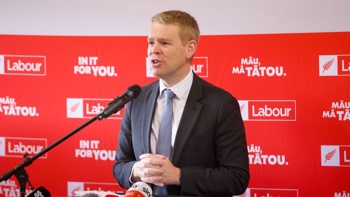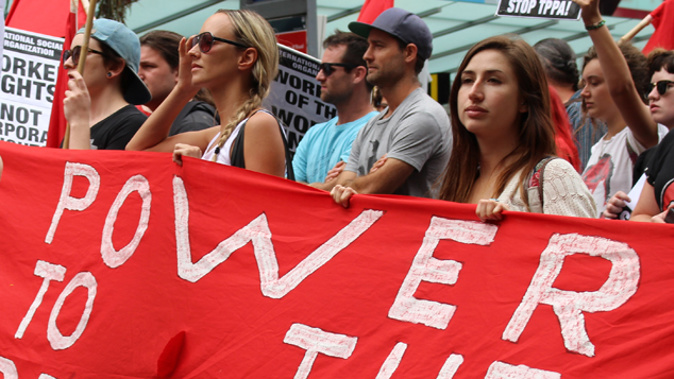
Protests rocked Central Auckland over the weekend. Queen St was blockaded by more than a thousand people, furiously demanding Prime Minister John Key resign.
Thousands more discussed the march. Similar events broke out around the country. Their calls rang out in the streets and led news bulletins. Twitter was swept by the hashtag #JohnKeyMustGo. Spurred on by success, the movement grew into an open revolt, an emergency session of Cabinet was convened, and commentators lined up to condemn or welcome the long-awaited New Zealand revolution.
Confused about why you didn’t hear about it? Could it be that coverage was suppressed by the government? Alas, the protest described above only happened in theory. The reality looked more like this.
Tiny crowd 15 mins into #johnkeymustgo protest in Aotea Sq, given 1000+ attending on Facebook @NewstalkZB pic.twitter.com/Ls9DkkLmMv
— Alex Braae (@awbraae) May 7, 2016
There is certainly no lack of anger against John Key at the moment. As electorally popular as the government he leads is, it is despised by many. Some National supporters call it Key Derangement Syndrome, and as the figurehead he is the particular target of vitriol.
Among the thousands of people who actually did shut down Central Auckland on the day the TPPA was signed, many of the speeches and banners directly referenced Key. The world-famous dildo that Steven Joyce copped was originally intended for Key. And let’s not forget the salty ‘FJK’ chant that provoked so much pearl-clutching during the 2014 election campaign.
An interesting piece of political commentary seen at the#tppanoway protest pic.twitter.com/4eLWwGlUUY
— Alex Braae (@awbraae) February 4, 2016
The similarities between the two events are there on paper. Both planned to make their presence felt through weight of numbers, both tapped into anger against the government, and with recent releases of Panama Papers documents there was even a context for why people might take to the streets to demand that the Prime Minister resign. And yet, the outcomes were so wildly different.
Spokesperson for the unsuccessful protest Vinny Eastwood was at a loss to explain why. He noted that sentiment against the Prime Minister on social media was strong.
“Anytime you put something up on Facebook as simple as ‘F John Key’ what you find is just an upswell of likes… It’s very perplexing to me given there were nearly 5000 confirmed on the Facebook page.” (My reading of the Facebook event was that the 5000 figure referred to the number who had indicated interest, rather than ‘confirming’ their attendance.)
Crucially, the demonstration on Saturday lacked any serious organisational support. A lone flag was raised in Aotea Square, the clenched fist of Socialist Aotearoa, one of the many small organisations that make up the wider anti-capitalist left. Eastwood mentioned rumours of factional disputes that meant some groups were wary of getting involved. He didn’t name names, but regardless, the active participation of unions, high profile NGOs or even opposition parties would have been highly unlikely in an event which didn’t appear to be particularly coordinated outside of a Facebook page.
In political action, organisation matters, and organisations matter. Generally large scale actions that work are put together by coalitions or networks of smaller groups with related aims. That was the case with the huge protest against mining in national parks in 2010, which had significant organisational muscle provided by Greenpeace and other environmental organisations. Political parties and NGO activists working together secured a referendum on asset sales. Zero hour contracts were ended thanks to a sustained campaign from unions like Unite. It’s not limited to the left either, Family First and the Sensible Sentencing Trust have also mobilised campaigns that succeeded in their aims, among other groups. Without organisations providing momentum and direction, all would have fizzled out.
Does that mean that social media is pointless for organising protests? Not at all - but it can only be seen as a tool, rather than a strategy in and of itself. Meatworkers Union organiser Darien Fenton said it was useful for communication and organisation between members, contact with Union officials, and helping to push messaging out to a wider audience.
She related the example of MWU members at the Rangiuru site (near Te Puke) staging a short notice picket organised through private Facebook pages to protest redundancies, a picket that attracted wider support than union members, and had media attention. It was the picket that got results though, rather than anything that took place online.
It’s the difference between winning “hearts and minds” or putting “boots on the ground”. Social media can create easy but illusory groundswells of support, not necessarily at the expense of action, but often overstated in terms of commitment to an action. Look at how well Twitter popularity worked out for Red Peak in the flag referendum, for example. With the Aotea Square protest in question, many of the confirmed attendances on Facebook came weeks before the actual event. Attending an event on Facebook carries the impression of making a commitment, but offers nothing in terms of follow up - over and above the occasional notification.
The age of social media has promised a lot, but delivered very little that isn’t replicated in previous techniques used by activists. An e-petition is effectively a letter writing campaign, a tweet isn’t far removed from a call to talkback, and there is still no better method for shoring up support than face to face contact. Unite Union organiser Joe Carolan cited leafleting and posters as practical steps that organisations had to undertake to run a successful protest, along with building a coalition with like-minded groups. “This practice separates serious political organisers from cyberdreamers – it’s called hard work” he added. Loose groups of individuals simply have not demonstrated the ability to do this in New Zealand.
So for those wanting their voice to be not just heard but amplified and made powerful, the answer is simple - get organised.
Twitter - @awbraae
Take your Radio, Podcasts and Music with you



